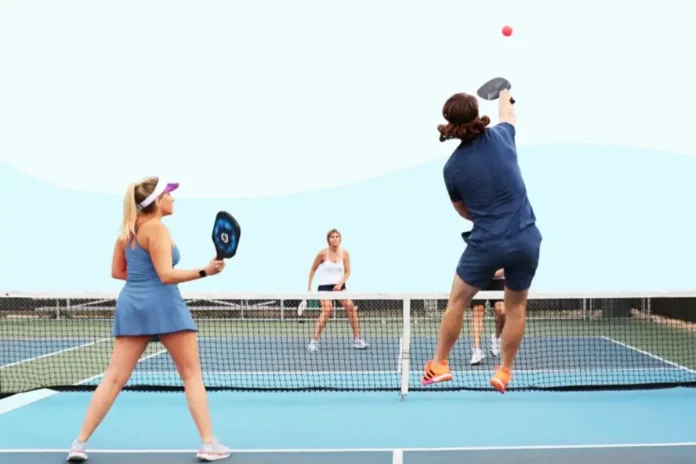Pickleball Return Smash Defense Tips: Mastering the kitchen line in pickleball is crucial for controlling the game. By moving opponents around with strategic dinks, players can stay on offense while forcing their opponents onto defense. Proper placement, timing, and shot selection at the non-volley zone can create openings and increase the chances of winning points.
Why Middle Court Position Matters
Hitting the ball toward the middle of the court makes the shot easier and reduces angles for opponents. It allows players to maintain better coverage and respond quickly to returns. Moving opponents wide can create openings, but overextending may leave gaps for counterattacks. Focusing on the middle shrinks attacking opportunities for the other team.
Dink Placement and Movement
Effective dink strategies involve alternating between middle and wide shots to disrupt opponents’ rhythm. Wide dinks stretch opponents out, while middle dinks limit their angles and reduce their offensive options. Players should adjust placement based on the opponent’s positioning, ensuring balance and readiness for the next shot.
Topspin vs. Backspin Decisions
Shot type depends on balance and positioning:
-
Topspin: Used when balanced and the ball is in front, allowing for more aggressive and controlled shots.
-
Backspin/Slice: Best when defensive or reaching for difficult balls, slowing the pace and buying time to recover.
Correct use of topspin and backspin can move opponents around and create pop-up opportunities for putaways.

Adapting Under Pressure
Players must quickly adjust to unexpected situations. If a shot is out of reach, switching to a defensive slice is safer than forcing an aggressive return. Adapting ensures continuous control at the kitchen line and prevents errors from panic shots.
Footwork and Court Awareness
Staying light on the feet and ready to move is key. Quick steps allow players to reposition after each dink. Proper spacing ensures they can cover the court effectively while keeping opponents uncomfortable. Small movements and anticipation can give a significant advantage.
Creating Openings
Consistently moving opponents around the kitchen line leads to mistakes or weak returns. Forcing players out wide or into awkward positions can open space for attacks. Alternating shot placement and speed keeps opponents guessing, making them less effective in both offense and defense.
Kitchen Line Strategy
-
Focus on the middle of the court to limit angles.
-
Move opponents with alternating middle and wide dinks.
-
Use topspin when balanced, backspin under pressure.
-
Adjust quickly if shots are unreachable.
-
Maintain footwork and anticipation for better coverage.
-
Force errors and create openings for winning points.
News in Brief: Pickleball Return Smash Defense Tips
Mastering kitchen line strategy in pickleball helps players control rallies. By moving opponents with precise dinks, using topspin and backspin appropriately, and maintaining footwork, players stay on offense. Smart placement and quick adjustments create openings, reduce opponent options, and increase the chance of winning points in both casual and competitive play.
ALSO READ: Unlock the Secret to the Fastest Legal Pickleball Serve—Pro Tips Revealed!

